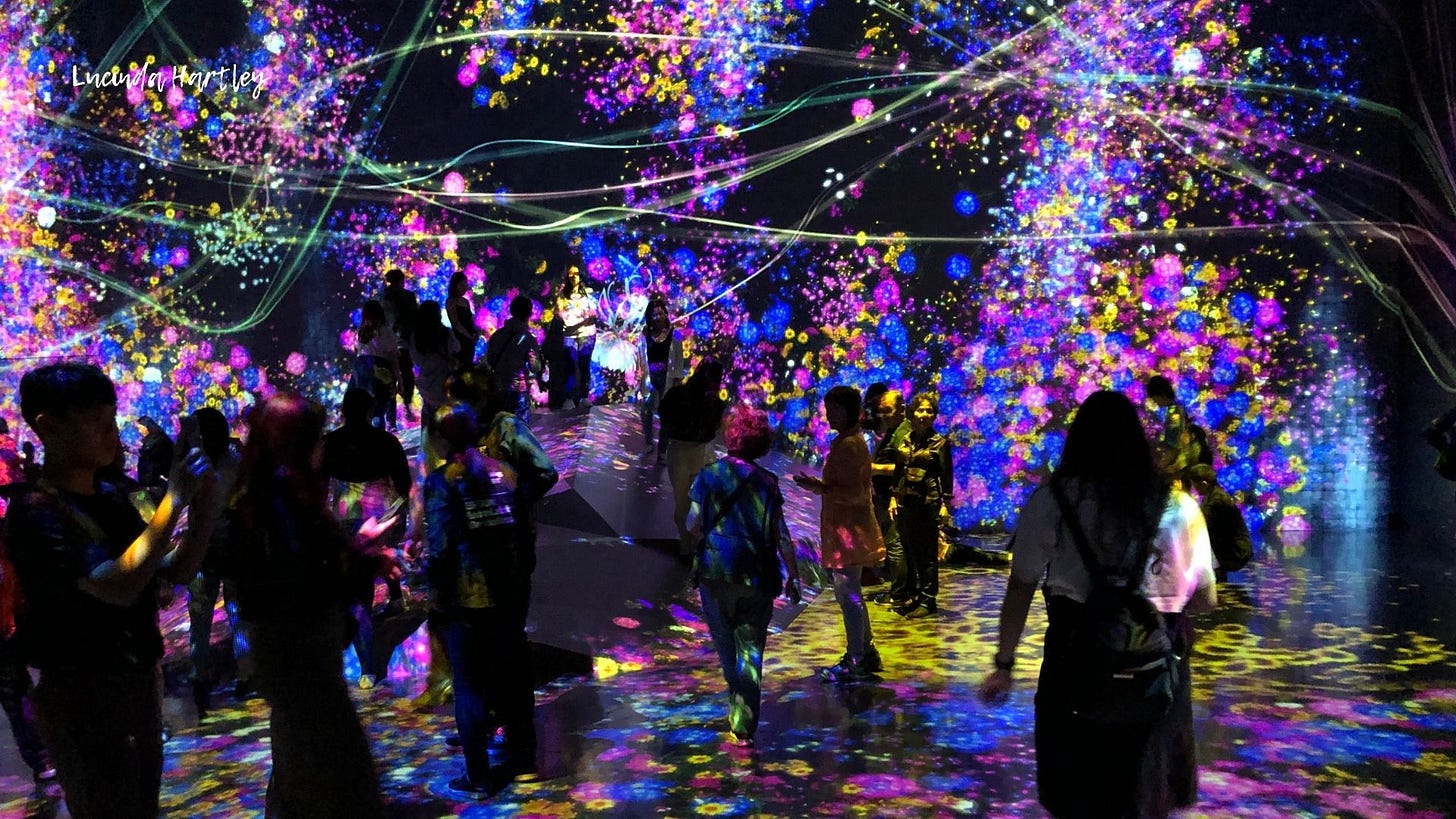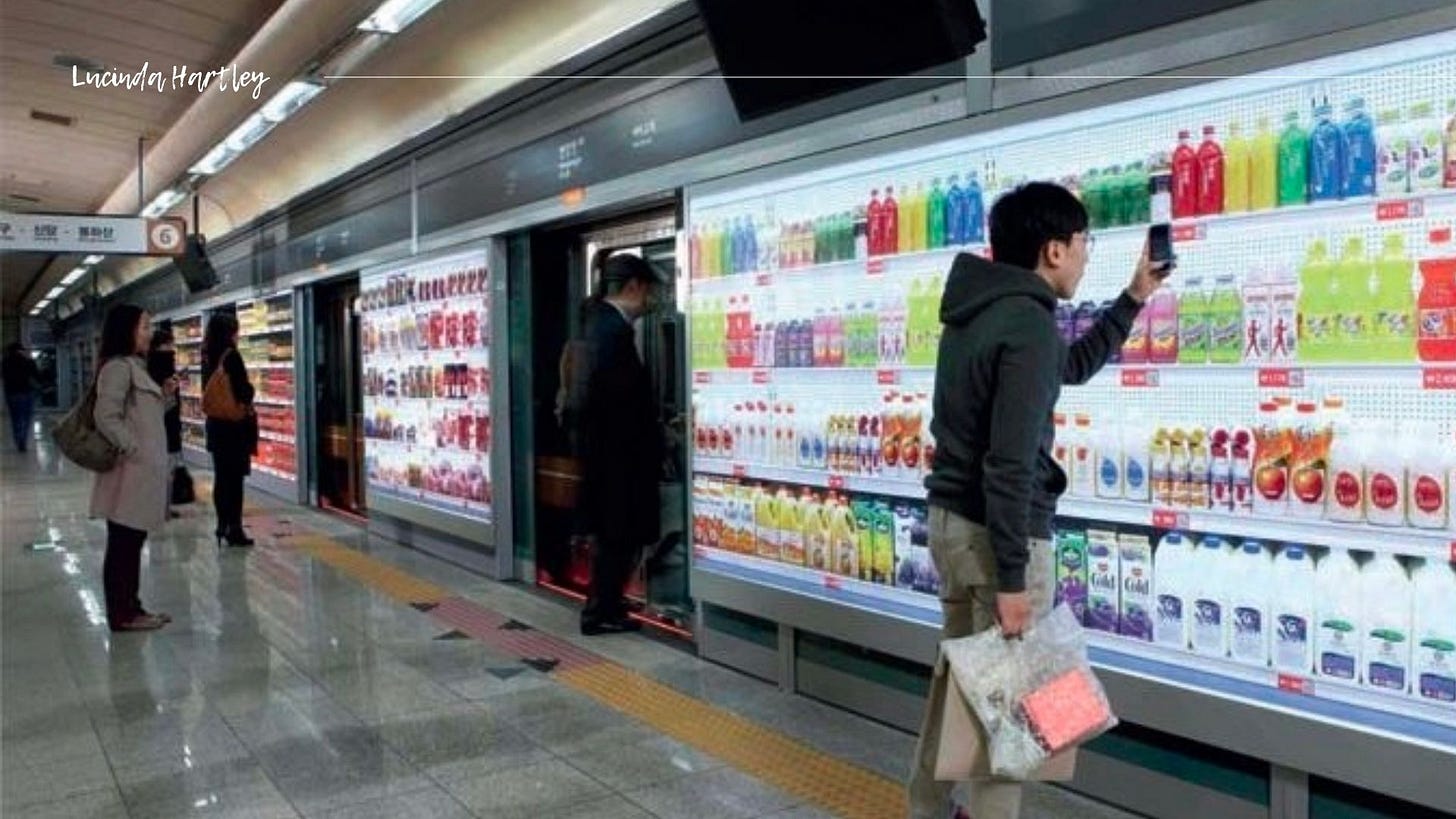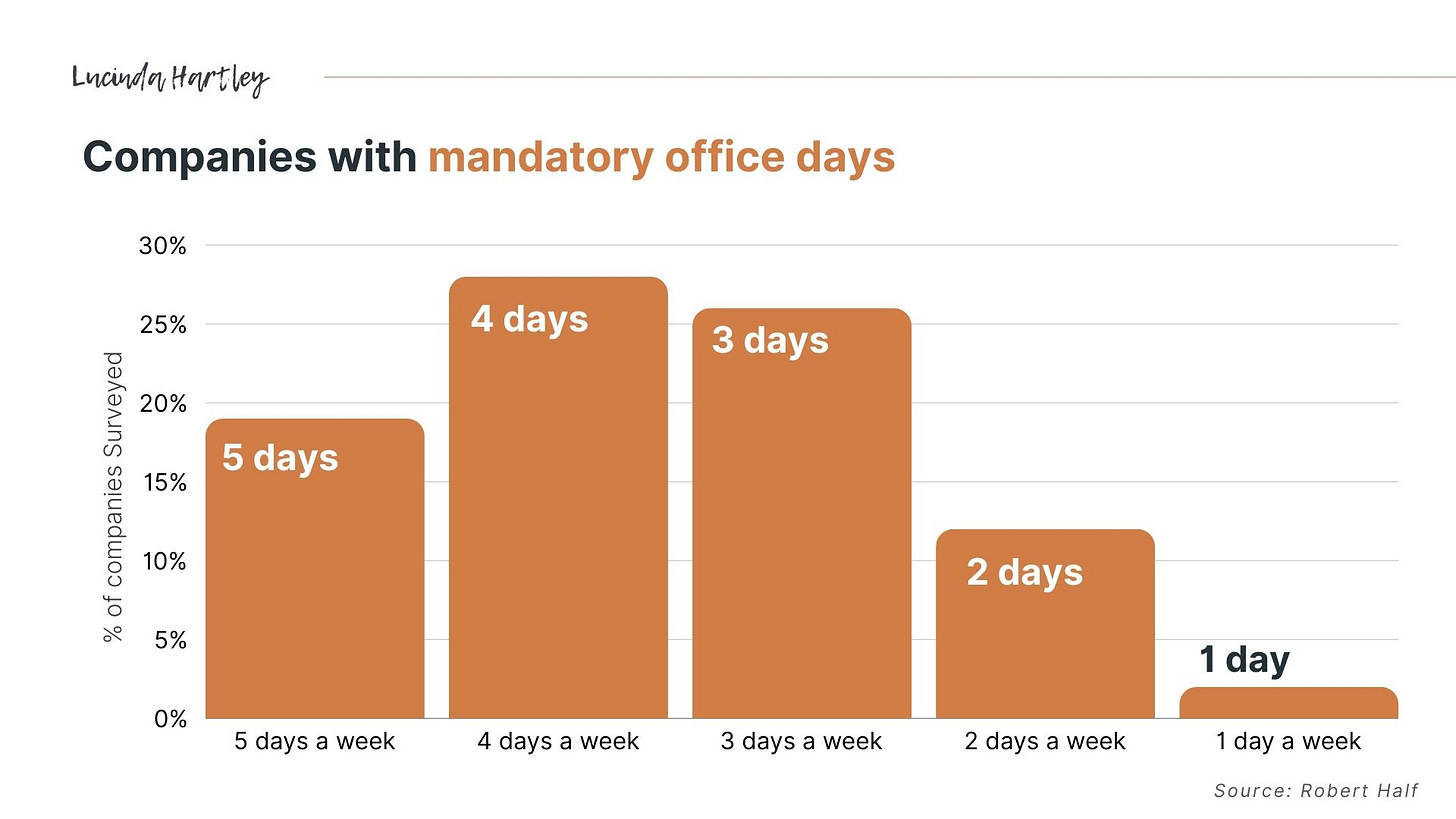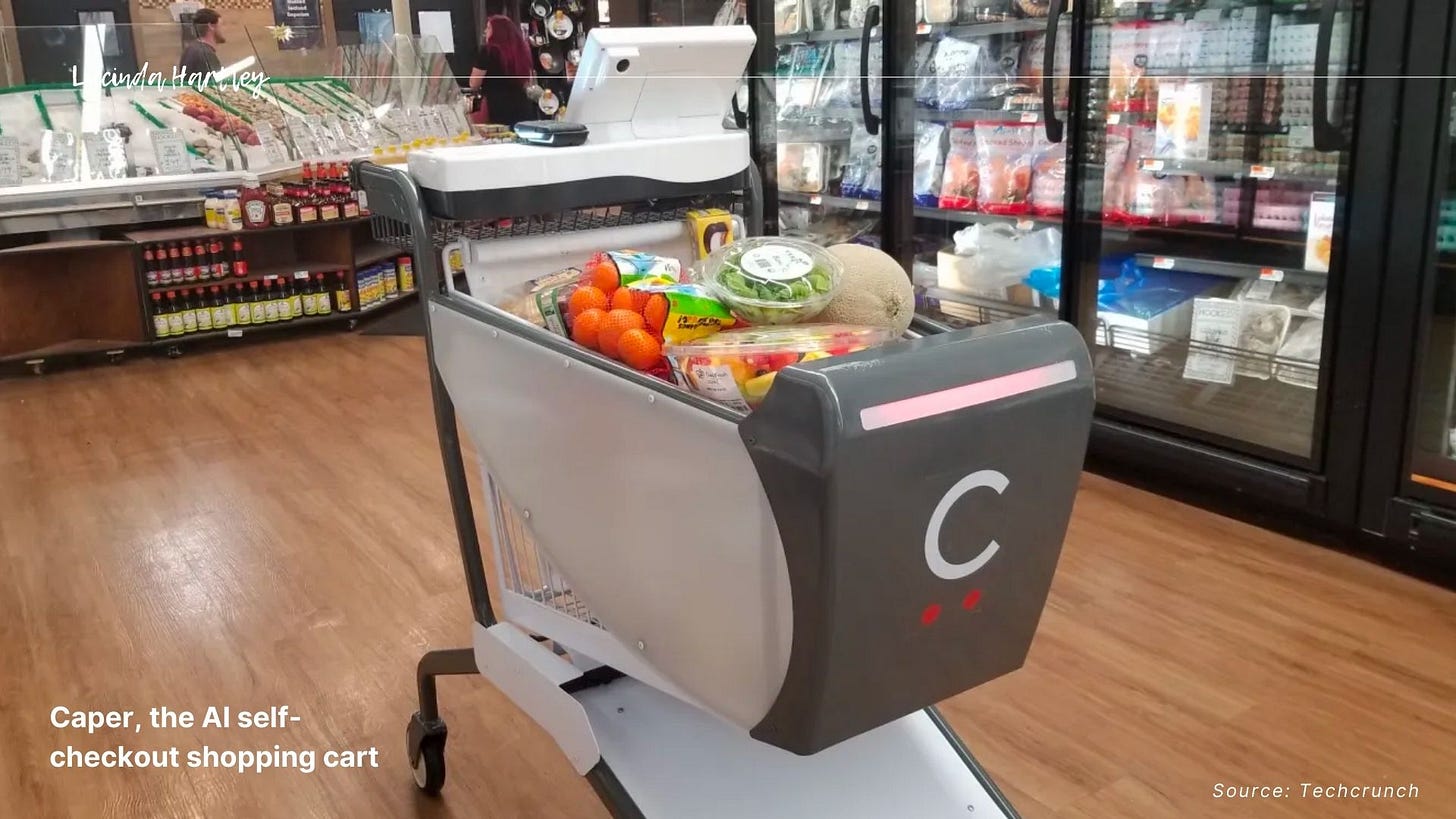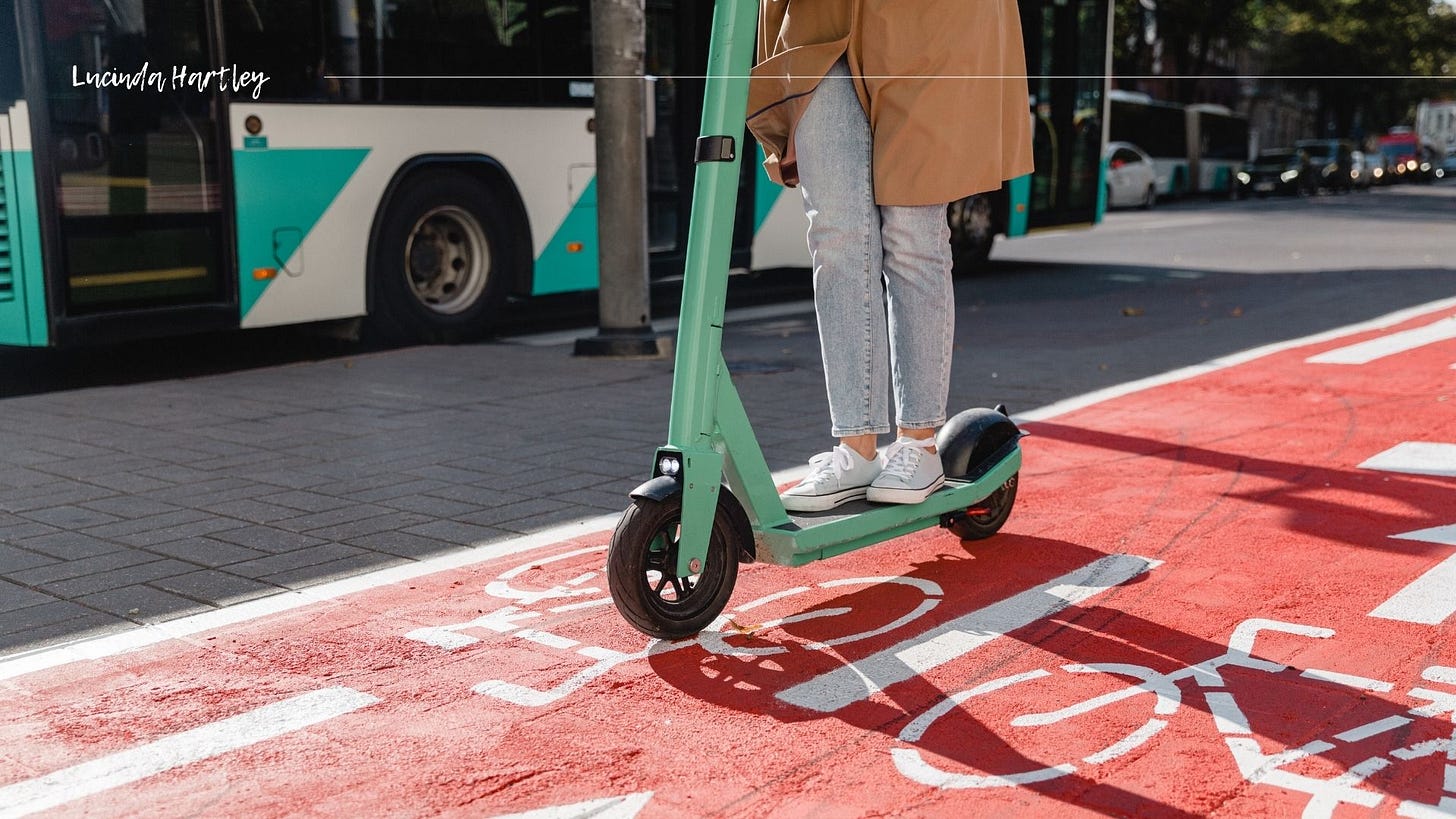The "Phygital" Revolution: The #1 Trend to Watch in 2024
How Technology is Bridging the Gap Between Physical and Digital Spaces, and what Leaders need to know.
Hello! 👋🏼 I’m Lucinda, a founder, entrepreneur and futurist. Welcome to my weekly newsletter where I share top trends in the future of cities and work and actionable insights for business leaders.
The technology we use every day is so ingrained in our lives that we hardly even notice it.
On an average morning, I'll check about 5 apps to navigate the basics of getting up and out the door. What's the weather? Ask Siri. Going for a run? Track it on Strava. How long will it take to get to work? Check Google Maps. Too much traffic? I'll ride-share instead. Open Uber. Meanwhile, I've listened to a podcast while getting dressed, checked a news app, sent a few emails, and might have remembered to listen to a guided meditation.
But using tech in daily life is just the warm-up. Some of the apps we rely on are in decline (think Meta), and that's predicted to continue as we see a rise in next-generation technology. Now, with generative AI, a distributed web, and the proliferation of IoT devices, we're entering a new trend in digital-enabled lifestyles. One where our lives aren't so much enhanced by technology but could merge with it.
Team Labs Immersive Digital Art Experience, Tokyo
The “Phygital” Era
The most transformative event we're witnessing in 2024 is the confluence of urban development, technology, and entrepreneurship, and the acceleration of what some have coined the "Phygital" era—the seamless integration of physical and digital spaces.
The "Phygital" era: the seamless integration of physical and digital spaces.
Imagine that we are no longer accessing technology only through devices and headsets but the metaverse is just where we are. An immersive, interactive space as part of everyday life.
There are many expressions of this physical-digital integration that already exist as part of our daily lives: People counters in public spaces, cameras on the street, "just walk out" payment systems.
But it's set to accelerate with generative AI and blockchain-based digital worlds. This has enormous implications for business leaders planning the future of cities and work.
Tesco’s homeplus virtual grocery store in a subway station, South Korea.
Here are the trends to watch in 2024:
1. Office
Despite many predictions that the future of work will go fully remote, it looks like the office is here to stay, with most companies opting for flex and hybrid policies rather than fully remote. In fact, according to LinkedIn, only 6% of roles advertised last year in Australia were fully remote (and 13% globally).
The number of companies mandating in-person days is increasing (despite some employee pushback). According to a survey by Robert Half, 87% of Australian companies have implemented mandatory office days for staff.
What this means:
The rise of hybrid (rather than remote) working means business leaders increasingly need to find ways to offer combined in-person/online experiences that are meaningful for collaboration and productivity.
We can expect to see an increase in "destinational" technology, which isn't accessible at home - digital hubs, VR, and other tools.
Offices increasingly designed to support collaboration spaces and office culture activities in-person.
Workplaces need to be planning for the governance to support additional technology infrastructure, not just the office.
2. Retail
Retail spaces are evolving into experience centers where consumers can interact digitally with physical products, erasing the boundaries between online and offline shopping.
What this means:
We can expect a rise in frictionless "just walk out" technology, smart shopping carts, and automated payments.
Virtual stores and try-ons in the metaverse. Some stores are setting up "virtual" shopfronts in the metaverse, a customised digital twin that lets customers browse as if in-store. For example, Gucci has built virtual spaces on the online gaming platform Roblox, offering games and NFTs.
Large supermarket chains are experimenting with in-store AI to search the location of products - like Googling IRL - upload a photo of the item you want, and you'll be taken to the location.
3. Mobility
"Phygital" spaces are some of the most advanced in the mobility space. Automation of mobility has already arrived from a technical standpoint. From self-driving cars to intelligent traffic management systems, AI is reshaping the future of mobility. While there is a promise of enhanced safety, efficiency, and sustainability, we can expect some more years before the policy and planning catch up.
What this means:
Autonomous vehicles. I had to mention it. One of the most hyped aspects of technological advancements. While the technology from companies such as Waymo is 99% of the way there, the last 1% is hard. That 1% is safety, and one that's difficult to overcome, which is why there's no rush to embrace the fully automated market just yet.
Most mobility remains local, even more so since the pandemic. Most car trips are less than 5km, however, only 6% of trips are walked. I often argue that we could solve a lot of our city problems just by walking more.
Micromobility is on the rise. There are now 3.6 million e-scooter riders in Australia. contributing $728 million to the Australian economy in 2022.
Data-driven decision-making. Transport is one of the most data-rich industries. If we were to train AI on this data, there are many new solutions including last-mile transit and other insights.
The "Phygital" revolution represents a pivotal shift in how we interact with technology, blurring the lines between our physical and digital worlds. As we move forward into 2024 and beyond, it's crucial for individuals and businesses alike to consider the impacts of these changes on teams, offices and cities.
….No part of this article was written by AI…





